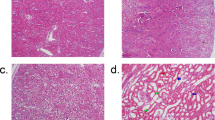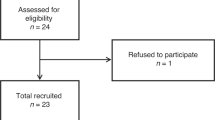Abstract
Perioperative fluid therapy is an important component of many medical procedures with animals. Buffered crystalloid solutions avoid inducing metabolic acidosis, but lactated solutions can elevate blood lactate concentrations and acetated solutions have not been thoroughly investigated using large animals. Here, the authors compare blood biochemical parameters in 20 juvenile pigs after perioperative fluid administration of an acetate-buffered solution (Elo-Mel isoton, EMI) or a lactate-buffered solution (lactated Ringer's solution, LRS). The authors measured blood lactate, glucose and electrolyte concentrations before and after administering the test fluid during surgery. Blood lactate concentration after administration was significantly higher in pigs that received LRS than in pigs that received EMI, but glucose and electrolyte concentrations did not differ significantly between treatment groups before or after administration. These findings suggest that EMI might be a preferable option for perioperative fluid therapy in pigs.
This is a preview of subscription content, access via your institution
Access options
Subscribe to this journal
We are sorry, but there is no personal subscription option available for your country.
Buy this article
- Purchase on Springer Link
- Instant access to full article PDF
Prices may be subject to local taxes which are calculated during checkout

Similar content being viewed by others
References
Szrama, J. & Smuszkiewicz, P. Acid-base disorder analysis during diabetic ketoacidosis using the Stewart approach—a case report. Anaesthesiol. Intensive Ther. 45, 230–234 (2013).
Guidet, B. et al. A balanced view of balanced solutions. Crit. Care 14, 325 (2010).
Zander, R. Flüssigkeitstherapie (Bibliomed–Medizinische Verlagsgesellschaft mbH, Melsungen, Germany, 2009).
Smith, I. et al. Base excess and lactate as prognostic indicators for patients admitted to intensive care. Intensive Care Med. 27, 74–83 (2001).
Vincent, J.-L. & Gottin, L. Type of fluid in severe sepsis and septic shock. Minerva Anestesiol. 77, 1190–1196 (2011).
Saidenberg, E. & Tinmouth, A. Ringer's lactate and red blood cells: is there sufficient evidence to recommend for routine use? Can. J. Anaesth. 56, 343–347 (2009).
Kirkendol, P.L., Robie, N.W., Gonzalez, F.M. & Devia, C.J. Cardiac and vascular effects of infused sodium acetate in dogs. Trans. Am. Soc. Artif. Intern. Organs 24, 714–718 (1978).
Von Engelhardt, W. & Breves, G. (eds.) Physiologie der Haustiere 4th edn. (Enke, Stuttgart, Germany, 2015).
Richards, R.H. et al. Acetate metabolism in normal human subjects. Am. J. Kidney Dis. 2, 47–57 (1982).
Aizawa, Y. et al. Depressant action of acetate upon the human cardiovascular system. Clin. Nephrol. 8, 477–480 (1977).
Nitenberg, A., Huyghebaert, M.F., Blanchet, F. & Amiel, C. Analysis of increased myocardial contractility during sodium acetate infusion in humans. Kidney Int. 26, 744–751 (1984).
Berkelhammer, C.H., Wood, R.J. & Sitrin, M.D. Acetate and hypercalciuria during total parenteral nutrition. Am. J. Clin. Nutr. 48, 1482–1489 (1988).
Hayat, J.C. The treatment of lactic acidosis in the diabetic patient by peritoneal dialysis using sodium acetate. A report of two cases. Diabetologia 10, 485–487 (1974).
Kveim, M.H. & Nesbakken, R. Acetate metabolizing capacity in man. J. Oslo City Hosp. 30, 101–104 (1980).
Roger, C. et al. Does the type of fluid affect rapidity of shock reversal in an anaesthetized-piglet model of near-fatal controlled haemorrhage? A randomized study. Br. J. Anaesth. 112, 1015–1023 (2014).
Martini, W.Z. Fibrinogen availability and coagulation function after hemorrhage and resuscitation in pigs. Mol. Med. 17, 757–761 (2011).
Guerci, P. et al. Impact of fluid resuscitation with hypertonic-hydroxyethyl starch versus lactated ringer on hemorheology and microcirculation in hemorrhagic shock. Clin. Hemorheol. Microcirc. 56, 301–317 (2014).
Zaar, M. et al. Initial administration of hydroxyethyl starch vs lactated Ringer after liver trauma in the pig. Br. J. Anaesth. 102, 221–226 (2009).
Ishihara, S. et al. Inhaled nitric oxide prevents left ventricular impairment during endotoxemia. J. Appl. Physiol. 85, 2018–2024 (1998).
Haga, H.A., Ranheim, B. & Spadavecchia, C. Effects of isoflurane upon minimum alveolar concentration and cerebral cortex depression in pigs and goats: an interspecies comparison. Vet. J. 187, 217–220 (2011).
Schwarzl, M. et al. Mild hypothermia attenuates circulatory and pulmonary dysfunction during experimental endotoxemia. Crit. Care Med. 41, e401–e410 (2013).
Branski, L.K. et al. A porcine model of full-thickness burn, excision and skin autografting. Burns 34, 1119–1127 (2008).
Fortelny, R.H. et al. The feasibility of FS mesh fixation by a transgastric approach—an important benefit in future NOTES procedures? J. Surg. Res. 171, 80–86 (2011).
Mohr, J. et al. Induced hypothermia does not impair coagulation system in a swine multiple trauma model. J. Trauma Acute Care Surg. 74, 1014–1020 (2013).
Schlimp, C.J. et al. Recovery of fibrinogen concentrate after intraosseous application is equivalent to the intravenous route in a porcine model of hemodilution. J. Trauma Acute Care Surg. 76, 1235–1242 (2014).
Swindle, M.M., Smith, A.C. & Hepburn, B.J. Swine as models in experimental surgery. J. Invest. Surg. 1, 65–79 (1988).
Sipos, W. et al. Changes in interleukin-10 mRNA expression are predictive for 9-day survival of pigs in an emergency preservation and resuscitation model. Resuscitation 81, 603–608 (2010).
Sipos, W. et al. OPG-Fc treatment in growing pigs leads to rapid reductions in bone resorption markers, serum calcium, and bone formation markers. Horm. Metab. Res. 43, 944–949 (2011).
Sipos, W. et al. Escin inhibits type I allergic dermatitis in a novel porcine model. Int. Arch. Allergy Immunol. 161, 44–52 (2013).
Keibl, C., Kerbl, M. & Schlimp, C.J. Comparison of Ringer's solution with 0.4% glucose or without in intraoperative infusion regimens for the prevention of hypoglycemia in juvenile pigs. Lab. Anim. 48, 170–176 (2014).
Weihs, W. et al. Outcome after resuscitation using controlled rapid extracorporeal cooling to a brain temperature of 30 degrees C, 24 degrees C and 18 degrees C during cardiac arrest in pigs. Resuscitation 81, 242–247 (2010).
Janata, A. et al. Emergency preservation and resuscitation improve survival after 15 minutes of normovolemic cardiac arrest in pigs. Crit. Care Med. 35, 2785–2791 (2007).
Baumgartner, W. (ed.) Klinische Propädeutik der Haus- und Heimtiere 7th edn. (Parey, Stuttgart, Germany, 2009).
Hofmaier, F., Dinger, K., Braun, R. & Sterner-Kock, A. Range of blood lactate values in farm pigs prior to experimental surgery. Lab. Anim. 47, 130–132 (2013).
Reiner, G., Hepp, S. & Hertrampf, B. Genetisch determinierte varianzanteile klinisch-chemischer laborparameter beim schwein. Tierärztliche Praxis Großtiere 34, 40–49 (2006).
Rivers, E.P., Jaehne, A.K., Eichhorn-Wharry, L., Brown, S. & Amponsah, D. Fluid therapy in septic shock. Curr. Opin. Crit. Care 16, 297–308 (2010).
Author information
Authors and Affiliations
Corresponding author
Ethics declarations
Competing interests
The authors declare no competing financial interests.
Rights and permissions
About this article
Cite this article
Keibl, C., Sipos, W., Ponschab, M. et al. Blood biochemical changes in pigs after infusion with acetate-buffered or lactate-buffered crystalloid solutions. Lab Anim 44, 268–273 (2015). https://doi.org/10.1038/laban.739
Received:
Accepted:
Published:
Issue Date:
DOI: https://doi.org/10.1038/laban.739
This article is cited by
-
Pyruvate is a prospective alkalizer to correct hypoxic lactic acidosis
Military Medical Research (2018)
-
Crystalloid fluid choice in the critically ill
Wiener klinische Wochenschrift (2018)
-
Acetate-buffered crystalloid infusate versus infusion of 0.9% saline and hemodynamic stability in patients undergoing renal transplantation
Wiener klinische Wochenschrift (2017)



